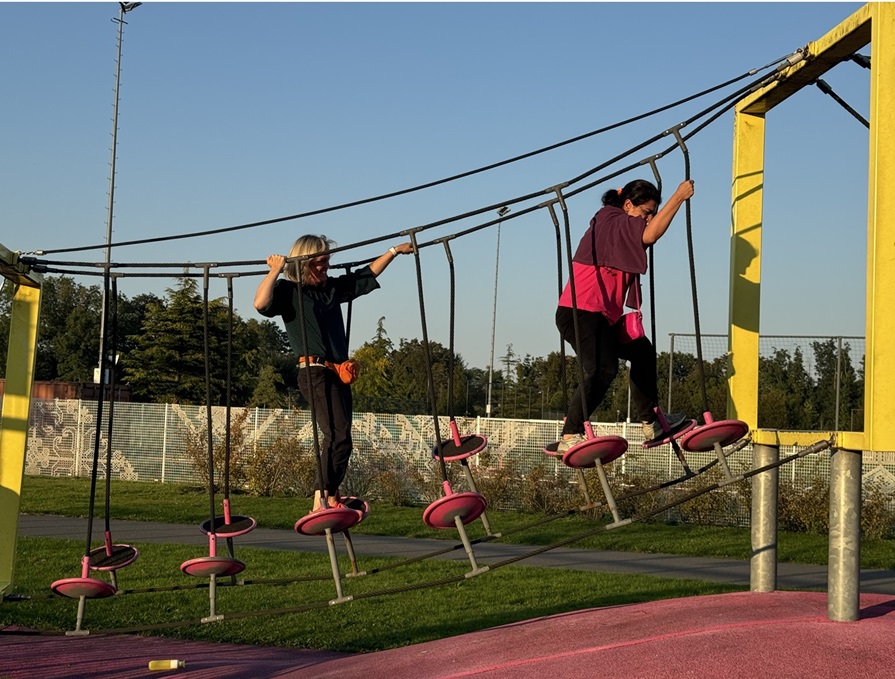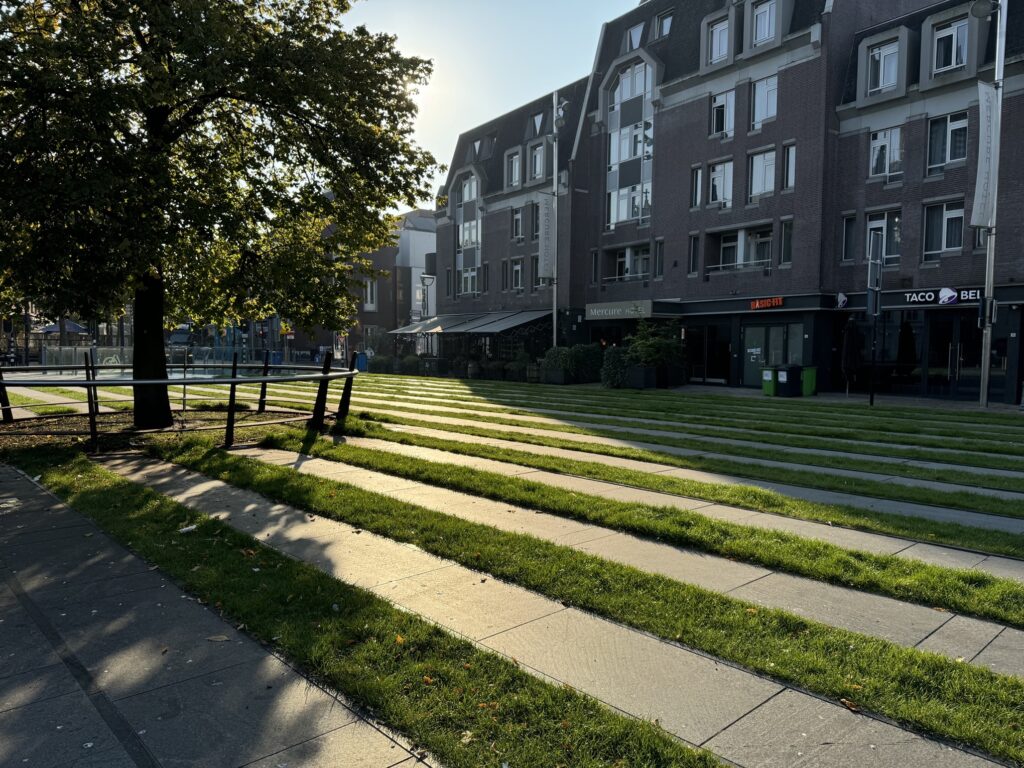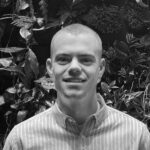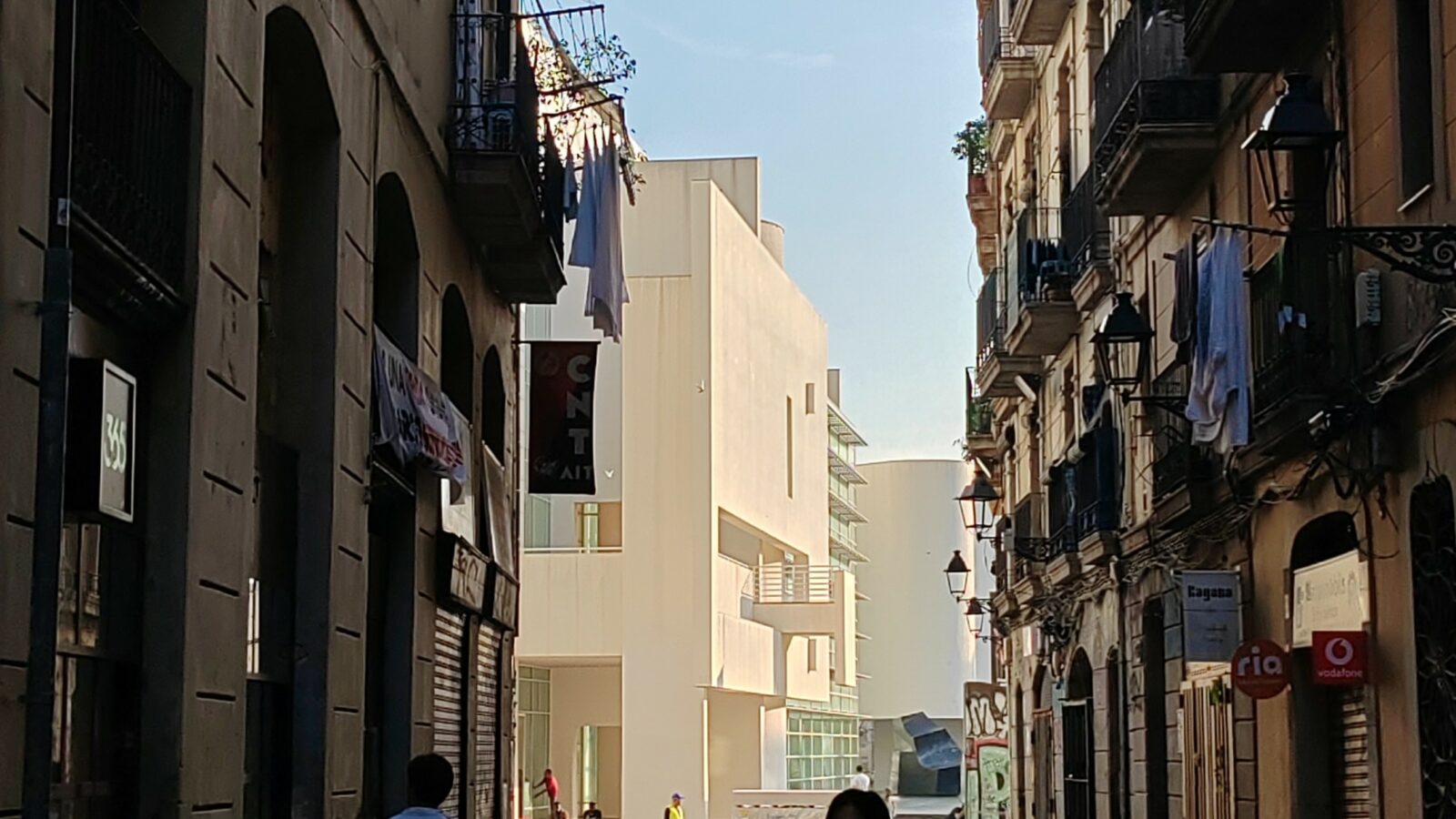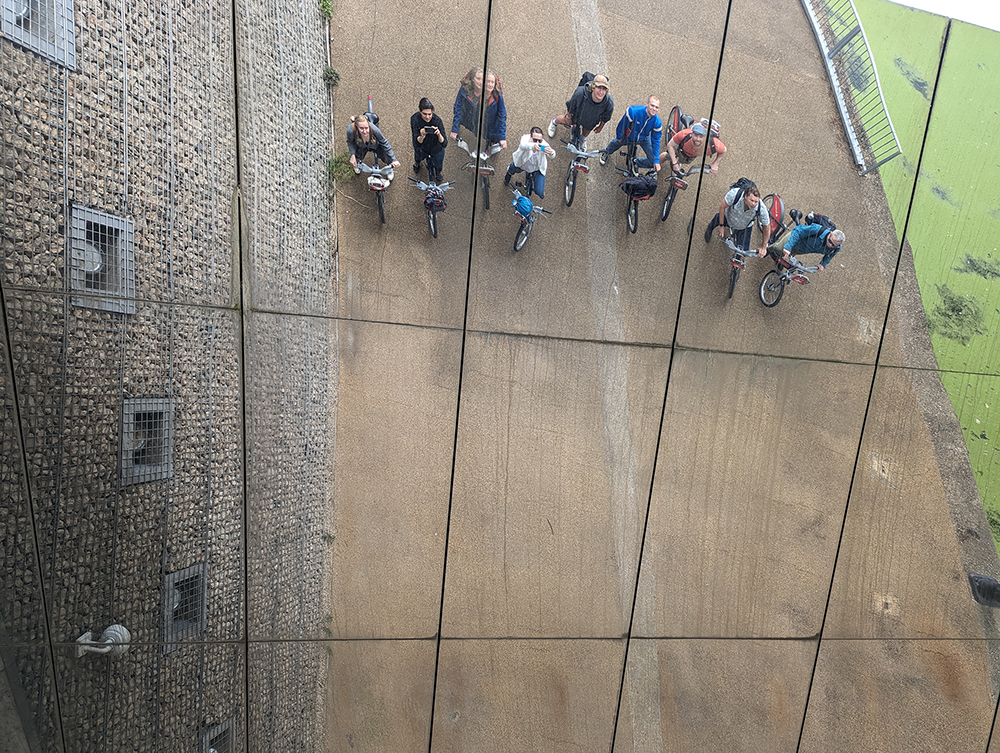Study Trip 2024; The Netherlands!
Two tree nursery’s and two cities later, an overview of HarrisonStevens 2024 Study Tour!
This year’s HarrisonStevens’ study tour took us to new and innovative urban landscapes to explore one of the foundational elements of our craft: trees and hedges. We had the unique opportunity to visit two renowned tree nurseries, where we delved into the cultivation practices that underpin landscape architecture. We travelled to Tilburg and Amsterdam to study completed landscape architecture sites, gaining fresh insights into design approaches that shape public space in these vibrant cities.
For the first stop of our tour, the team travelled down to Bedfordshire where we visited Deepdale Tree Nursery. HarrisonStevens have a long term working relationship with Deepdale spanning beyond the creation of the practice in 2010. Deepdale pride themselves on quality, and it is clear to see why. We were given a tour through the nursery where we learned lots about the process of growing and transporting trees, how to inspect air pots, and tips on what to look out for when picking trees.


We then headed overseas where we were greeted by Matthias and Brenda and shared a lovely meal in central Tilburg. Despite only just arriving in the Netherlands, the team were already amazed by the quality and quantity of cycle networks. We enjoyed a whistle-stop tour through some of the recent developments in Tilburg, stopping at Tilburg Hill Square and the City Centre redevelopments in the streets and parks.
Brenda and Matthias next gave us a tour around Smits Boomkwekerij starting off with a focus on hedges and shrubs, talking the team through each species and their best application. We moved on to view a range of specimen trees, of many shapes and sizes. The site at Smits had perfect growing conditions paired with the latest technology; specialist tools for cutting, indoor and outdoor watering systems, cardboard packaging and capacity to lay out trees into site layouts. The nursery is truly innovative in its day to day practices and how it transport stock across the world. It was then time to catch the train and headed into Amsterdam!
Our first day in Amsterdam was a busy one. Harry, Tom, Mike and Martin had an active start to the day joining the Amsterdam Park Run which was located in Het Amsterdamse Bos, our first site of study for the day. After the Park Run, the team met up to explore the enormous man-made forest. Spanning nearly 1,000 Hectares and home to over 150 tree species, the park is one of the green wedges that cut into Amsterdam and considered as one of the “green lungs” of the city. The park was established in the early 1900s and lives on as a symbol to Amsterdam’s commitment to accessible green spaces within the city.
Next up, Amsterdam Olympic Park. Created for the 1928 Olympics, the surrounding site underwent development in the early 2000’s. Like much of Amsterdam, the park adopts water management systems such as rain gardens and permeable surfaces and prioritises cyclists and pedestrians. Nearby was our next site, Schinkel Islands. The islands aim to create a sense of wilderness in the city and serve as ecological corridors. The islands also mimic natural aquatic environments, creating safe areas for amphibians, fish and aquatic plants. We then moved onto Vondelpark. Referred to as the “green heart” of Amsterdam, this central 47 hectare park has a strong community feel, it was lovely to see locals treating the park like their own gardens, setting up birthday parties, family celebrations, games bunting and lights throughout the park. Interestingly, since its creation on the late 1800s the park is sinking so there is an ongoing management plan to keep the park above the water level, restoration projects are required every 30 years; a common challenge in Amsterdam and the Netherlands.
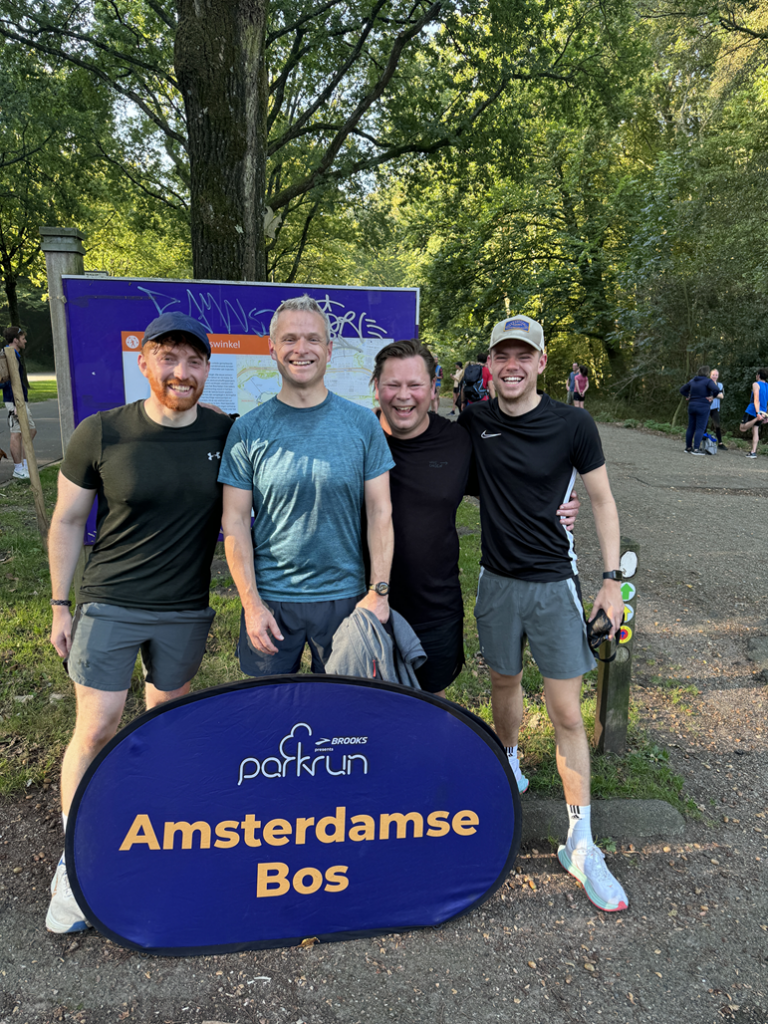
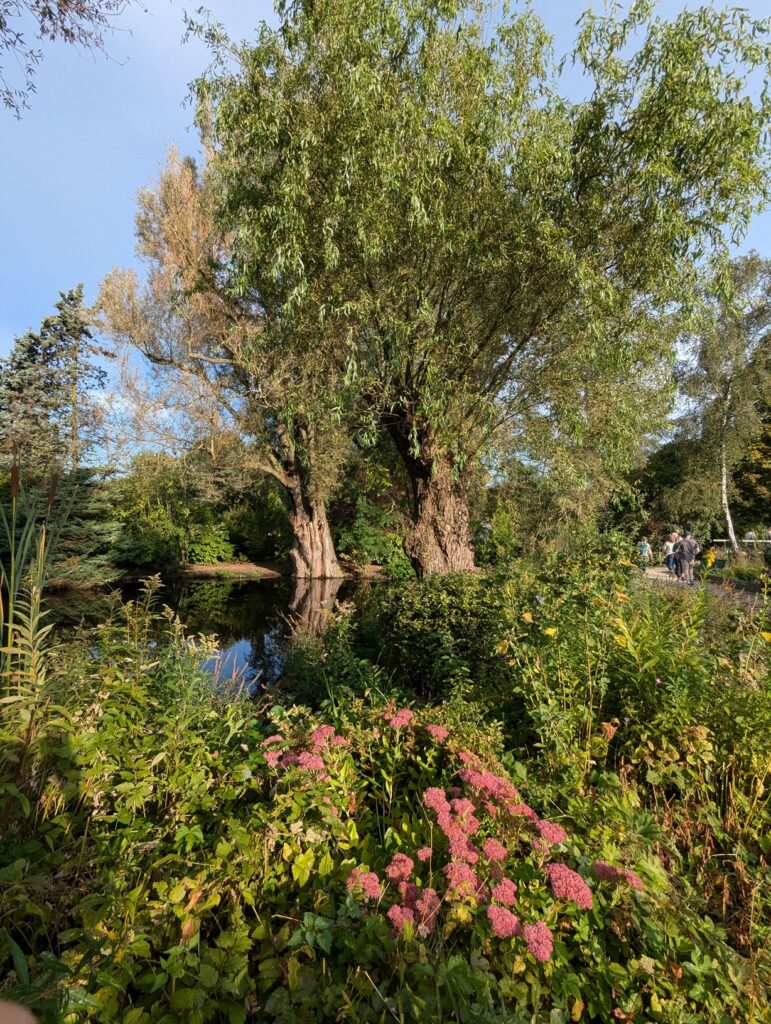
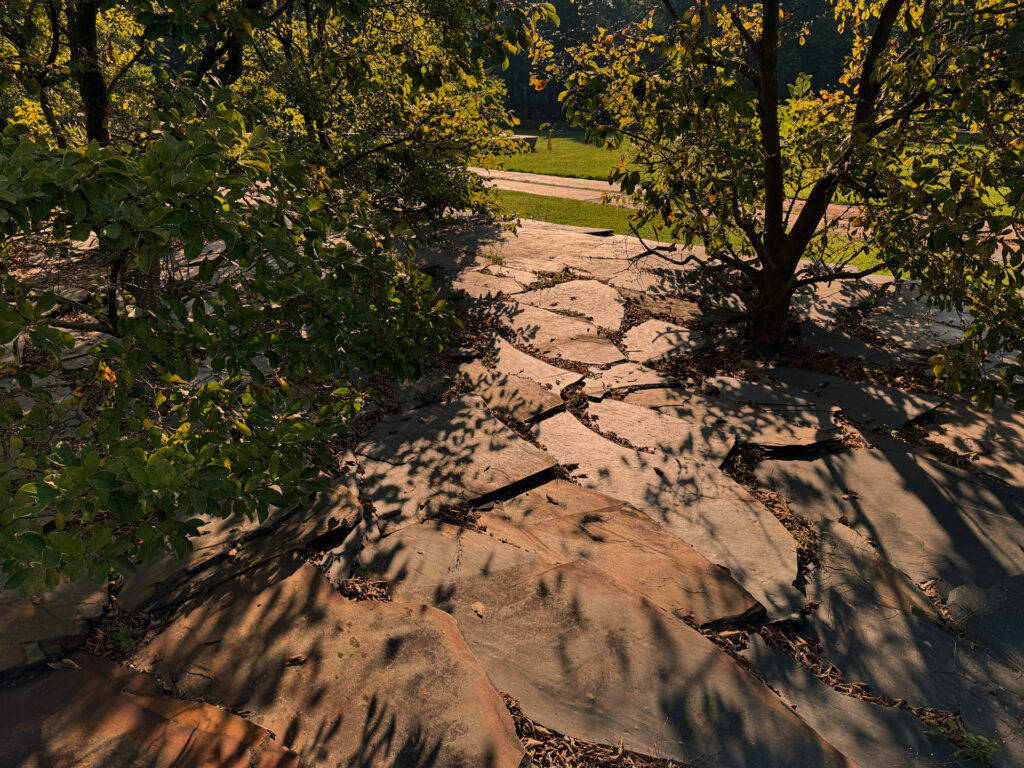
Following some food and a pint, it was time to head to Johan Cruijff Boulevard and Hoekenrode Square. Johan Cruijff Boulevard, named after the Dutch football legend, is more than a sports landmark; it’s a pedestrian-friendly thoroughfare designed to handle the heavy foot traffic of game days and concerts, while also inviting everyday visitors with retail and dining options. The nearby Hoekenrode Square provides an open plaza that connects to Amsterdam’s extensive cycling and public transit networks, offering art installations and seating areas that aim to encourage lingering and socializing. Our next stop was the ING Headquarters, a site designed for local people to mingle and view from the nearby high rise. We concluded our day at Nelson Mandela Park (formerly Bijlmerpark), a spacious urban park in Amsterdam Southeast. The team enjoyed playing on the various play features from an outdoor DJ Deck to a funky obstacle course designed by Carve. It was clear to see that the local children and professional landscape architects, enjoyed the space as there was lots of activity all around.
The final day of the Study tour began with Wester Park, a site which reimagined its industrial heritage to create a multifunctional public space, hosting events such as music festivals, outdoor movie screenings and food markets. Crossing the River Amstel via the ferry, the team travelled to Amsterdam Noord to see our final sites. Surrounding the Eye Film Museum is Eye Plaza; hosting a minimalist material palette to focus attention on the stand out architecture, the plaza is a multi terraced, pedestrian focused, and waterside. Finally, the team visited De Ceuvel, a former shipyard turned creative workspace and hub. The site had a cool bohemian feel and focused on green technology, energy self sufficiency and planting that would aid in cleaning the once polluted land. The informal paths, cozy meeting spots, and unique houseboat offices create an atmosphere that is both relaxing and inspiring. It is a meanwhile use project that once the land is cleaned of contamination it will be developed as a new neighbourhood and waterside destination.
The connecting flights back to Edinburgh gave us all an opportunity to reflect on the four days of experiences. In three words lets use the WhatThreeWords location from one of our visited parks – ‘cycle.exists.pancake’. Cycle – that’s the way to get round, it was an eye-opener to witness the infrastructure in place for cycling in the city, its a cultural and social movement and incredible to see. Exists – talks about the land that existed and the land that is new and reclaimed, it is a constant battle with water, that has been at the foundation of Dutch society and history for centuries. This also talks to the ongoing role of landscape in the city, the trees from the nurseries, it exists but has to be constantly managed and invested in, to maintain a quality and service to the citizens. Pancake – lets face it the country is as flat as a ‘pancake’ and this is one reason why cycling is so prevalent, and it also gives rational to the constant reclaiming, recovery and restoration of land across the country. Being at times below sea level was a humbling experience, knowing that innovations and interventions are keeping us dry. Always wonderful to visit the Netherlands, every day was great, and to share these experiences as a team was fantastic.

